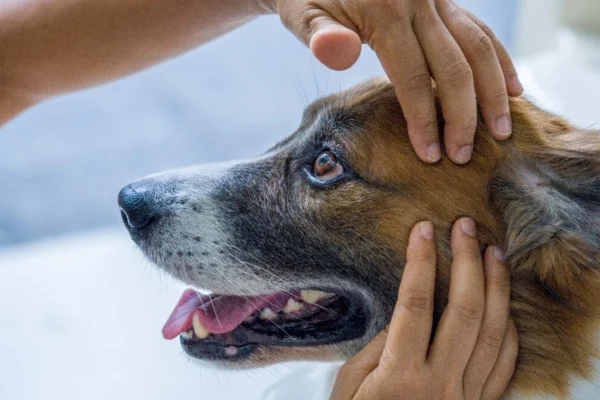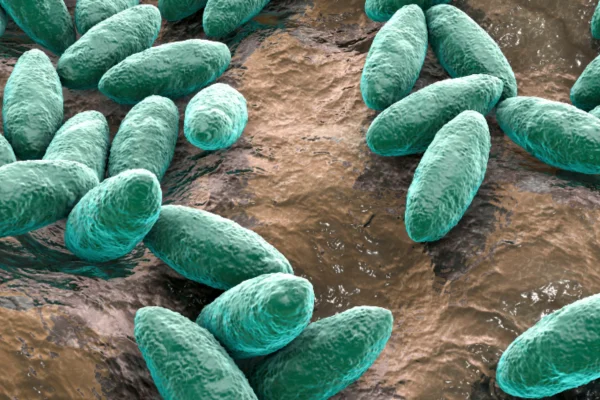Canine Brucellosis: A Complete Guide to Understanding the Disease and Protecting Your Best Friend
Canine brucellosis is an infectious disease that affects dogs all over the world. Caused by the bacterium Brucella canis, this disease can have serious consequences for the health of animals and requires special attention from owners and veterinarians. In this article, we'll explore everything you need to know about canine brucellosis, including its origin, symptoms, diagnosis, treatment and prevention measures.
What is Canine Brucellosis?
Canine brucellosis is a bacterial infection caused by Brucella canis, a microorganism that mainly affects dogs, but which can also infect other animals, including humans, although rarely. Transmission occurs mainly through contact with reproductive secretions such as semen, vaginal fluids and fetal tissues, making the disease particularly prevalent in environments where canine reproduction is common.
History and Discovery of Brucella canis
Brucella canis was first identified in the 1960s in the United States. Since then, the disease has been the subject of study and concern in several countries. Canine brucellosis is most often found in kennels and breeding facilities, where population density and interaction between animals facilitate the spread of the bacteria.
Contents
Symptoms of Canine Brucellosis
The symptoms of canine brucellosis can vary significantly, and many infected dogs may show no obvious signs of the disease. However, some of the most common symptoms include:
- Spontaneous abortions: One of the most obvious signs in infected females is the occurrence of abortions, usually between 45 and 55 days of gestation.
- Infertility: Both males and females can experience reproductive problems, including infertility and decreased libido.
- Inflammation of the testicles: In males, inflammation of the testicles (orchitis) and epididymis (epididymitis) can occur, leading to pain and discomfort.
- Lymphadenopathy: Enlarged lymph nodes, especially inguinal and submandibular lymph nodes.
- Lethargy and weakness: Infected dogs may show general signs of malaise, including fatigue, lack of appetite and weight loss.4
Diagnosis of Canine Brucellosis
Diagnosing canine brucellosis can be challenging due to the variability of symptoms and the possibility of subclinical infection. The most common diagnostic methods include:
Serological tests
Serological tests are widely used to detect antibodies against Brucella canis in the animal's blood. Tests such as the rapid agglutination test (RSAT) and the gel immunodiffusion test (AGID) are frequently used.
Bacterial culture
Bacterial culture, which involves growing the bacteria from blood, fluid or tissue samples, is considered a definitive diagnostic method. However, this process can be time-consuming and not always successful due to the demanding nature of the bacteria.
Polymerase Chain Reaction (PCR)
PCR is a modern technique for detecting the genetic material of Brucella canis. This method is highly sensitive and specific, making it a valuable tool in the diagnosis of canine brucellosis.
Canine Brucellosis Treatment
The treatment of canine brucellosis is complex and may not result in a complete cure of the infection. The Brucella canis bacterium is intracellular, which makes it difficult to completely eradicate the organism. Treatment options include:
Antibiotics
Antibiotic treatment is the main approach to controlling the infection. Antibiotics such as doxycycline, in combination with rifampicin or gentamicin, are often used. Treatment is usually prolonged, lasting several weeks to months.
Castration
In some cases, castration of infected animals is recommended, especially to reduce the spread of the disease and improve the effectiveness of antibiotic treatment. Castration helps to reduce the reproductive secretions that can transmit the bacteria.
Monitoring and follow-up
Dogs treated for canine brucellosis should be monitored regularly through serological tests to check for the presence of antibodies. This helps determine the effectiveness of the treatment and detect possible relapses.
Canine Brucellosis Prevention
Preventing canine brucellosis is essential to protect dogs' health and prevent the spread of the disease. Preventive measures include:
Regular testing
Regular testing for canine brucellosis in breeding dogs and in new animals introduced into a kennel or breeding facility is crucial. Early detection allows control measures to be implemented before the infection spreads.
Isolation of Infected Animals
Dogs diagnosed with brucellosis should be isolated from other animals to prevent transmission of the disease. Isolation helps contain the infection and protects the health of other dogs.
Hygiene and Sanitation
Maintaining a clean and hygienic environment is key to reducing the risk of infection. This includes regularly cleaning the dogs' living areas, as well as disinfecting equipment and surfaces.
Reproductive Control
Implementing reproductive control practices, such as neutering animals not intended for breeding, can help reduce the spread of canine brucellosis. In addition, careful selection of brucellosis-free and tested breeding partners is essential.

Impact of Canine Brucellosis on Public Health
Although canine brucellosis is primarily an animal disease, it can also have public health implications. Brucella canis is zoonotic, which means that it can infect humans. However, cases of human infection are rare and usually occur in people with direct and frequent contact with infected dogs, such as vets and breeders.
Symptoms in Humans
In humans, Brucella canis infection can cause flu-like symptoms, including fever, fatigue, muscle and joint pain. Early diagnosis and treatment are important to avoid serious complications.
Protective measures
To minimize the risk of zoonotic transmission, it is important that people working with infected dogs wear appropriate personal protective equipment, such as gloves and masks, and practice good hygiene practices, including frequent hand washing.
Conclusion
Canine brucellosis is a serious disease that requires attention and care from both owners and veterinarians. Raising awareness about the symptoms, diagnostic methods, treatment options and prevention measures is key to controlling the spread of the disease and protecting the health of dogs and the people who interact with them. Regular testing, isolating infected animals and maintaining strict hygiene practices are essential steps in preventing canine brucellosis and ensuring a safe and healthy environment for everyone.
Thank you for visiting us and check out our other work








